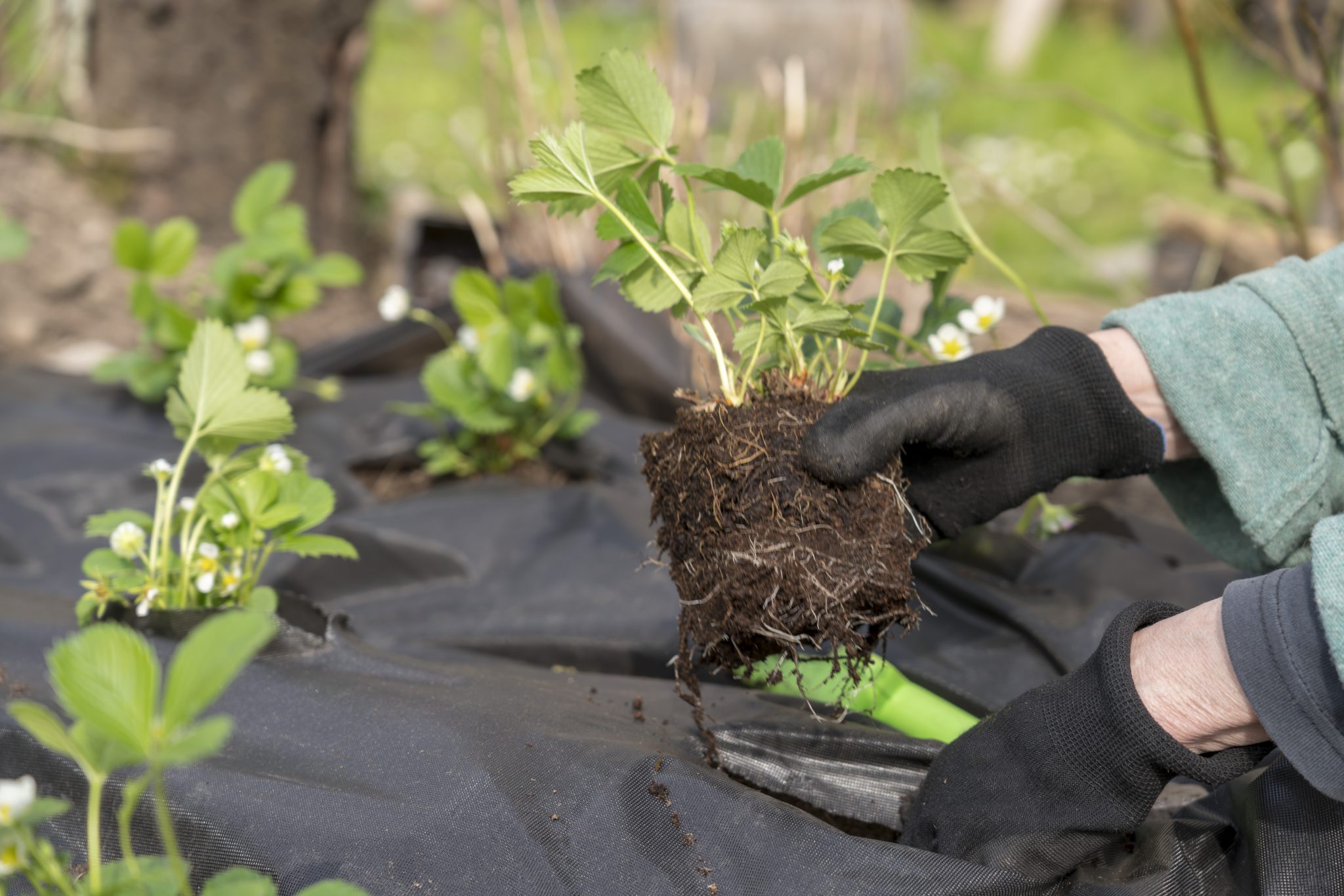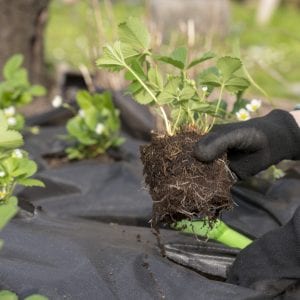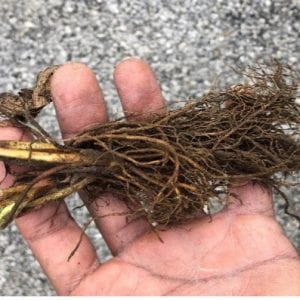Crop Production

High tunnel production can supply strawberries over an extended period and therefore offers great opportunity for increased income.
Strawberries are a popular high-value crop generally grown in field production. Growing them in high tunnels, however, provides protected cultivation and makes it possible to extend the Alabama strawberry growing season beyond the normal 4- to 6-week period in the spring and possibly into seasonal markets such as Thanksgiving and Christmas.
Preplant Fertilizing
Before planting strawberries, conduct a soil test to determine soil pH and fertilizer recommendations. For strawberry production, soil pH should be between 6 and 6.5. Alabama soils tend be acidic, so lime is typically added to raise the pH. The liming reaction to raise soil pH may take several months, so lime must be applied well before planting time. Half of the potassium requirement and the entire phosphorus requirement are applied before planting. The amount of nitrogen recommended for strawberries is 150 pounds per acre, with one third applied before planting.
Bed Formation
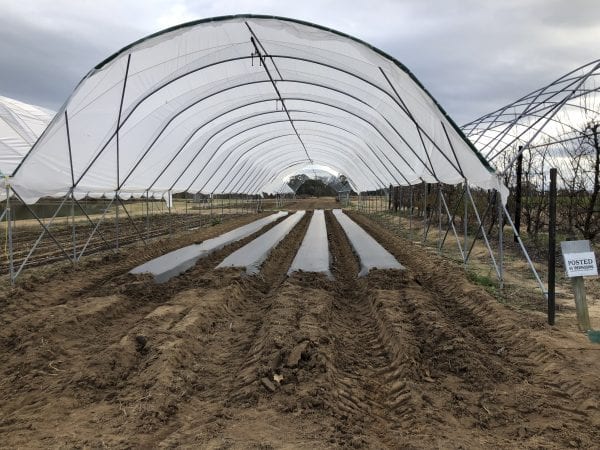
Figure 1. High tunnel with beds covered in black plastic mulch.
Soil for strawberries must be moist for proper bed formation. Exact soil percentage moisture may be difficult to assess, but a good rule is that soil be moist but not wet. In other words, you should be able to feel moisture in the soil but should not be able to squeeze water out of it with your hand. If soil is too dry, use sprinklers to add moisture and then form beds. Apply plastic mulch and drip irrigation as beds are being formed. A bed former/plastic layer tractor attachment is typically used to form the bed and install drip tape and plastic. If preplant herbicide is to be used, apply it immediately after the drip tape has been applied so that the soil is not disturbed. Apply plastic mulch immediately after applying pre-emergent herbicides (figure 1).
Selecting Strawberry Plants
It is important to plant healthy strawberry plants for a productive season. Purchase bare root plants or plugs from a reputable nursery. Remove as much soil from the bare root plants or freshly dug plants as possible. Box bare root plants and store them in a cooler until they are ready to be planted. Be careful to not plant bare root plants too deeply. The crown of the plant is the most actively growing portion, and burying it too deeply can rot the crown and cause the plant to die. Transplant plugs have well-developed root balls that allow for easy extraction from the trays. Plugs are more expensive than bare root plants, but they are easier to plant, so the cost may be worthwhile.
Planting Strawberry Plants
Plant strawberries in double-staggered rows in plastic- covered beds 3 to 5 feet wide. Space rows 14 inches on either side of the drip tape and 12 inches between plants within a row. Typically, all of the holes are punched in the plastic using a hole puncher wheel to ensure that plants are evenly spaced. If a planting wheel is not available, a measuring tape can be stretched down the length of the row and holes punched by hand at the desired spacing. Make holes wide enough to accommodate planting of the strawberries but no wider because larger holes expose more of the soil surface and encourage more weed growth. Plant the plugs or bare roots 5 to 6 inches deep, using a small hand shovel to make a V-shaped hole. Whether planting bare root or plug plants, be careful to not bury the crown of the plant.
- Figure 2a. Plug strawberry plants.
- Figure 2b. Bare root strawberry plants.
- Figure 3. Planting plug strawberry plants using a wheel designed to form holes through the plastic mulch.
Postplant Fertilizing
After plants are established, apply 5 pounds of nitrogen per acre per week until spring flowering. Once spring flowering begins, apply 6 to 7 pounds of nitrogen per acre. Strawberries should receive a total of 150 pounds of nitrogen per acre, which includes the preplant application. Liquid fertilizer can be applied through the irrigation system using a fertilizer injector.
Varieties for High Tunnel Production
Selecting the appropriate variety is one of the most important decisions in strawberry production. Strawberry varieties are sensitive to their environment; therefore; the performance of a variety depends on location. Both short-day (June-bearing) and day-neutral strawberry varieties have performed well in high tunnel trials in other states including ‘Radiance’, ‘San Andreas’, and ‘Festival’. ‘Radiance’ and ‘Festival’ are short-day varieties released by the University of Florida breeding program. Day-neutral variety ‘San Andreas’ is a product of the University of California Davis breeding program. The performance of other varieties in high tunnel conditions will be reported as research trials continue. In many cases, producers can assess performance of strawberry varieties on their own farms. When doing so, plant a small section and take detailed notes of the variety’s performance before planting a larger number of plants.
Controlling Diseases and Insects
Diseases such as anthracnose often infect plants at nurseries before being sold and planted in grower’s fields; therefore, the first step in controlling disease is to shop at a reputable nursery.
High tunnels provide a protective environment for strawberries. Unfortunately, protective conditions for strawberries provide optimal conditions for insect and disease pests such as white flies, aphids, and two- spotted spider mites. Fungal disease pests such as Botrytis (gray mold) can also devastate a strawberry crop. Managing this disease should begin early in planting. Follow recommendations for pest management of high tunnel strawberries, being aware that certain chemical remedies for pests may be allowed in open field strawberry production but may not be allowed in enclosed high tunnels. Consult your local Extension office for recommendations if needed.
Irrigating
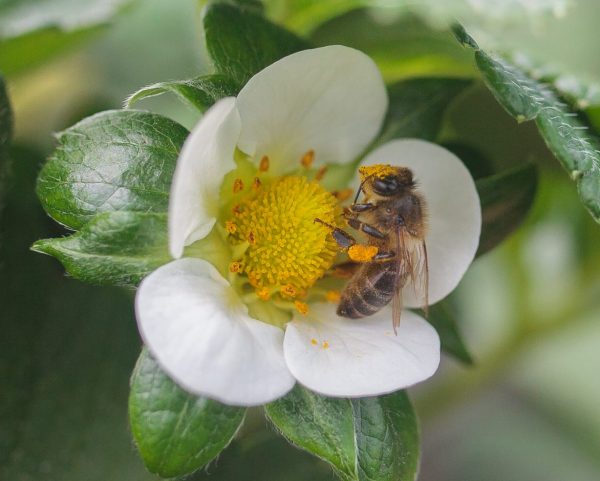
Figure 4. Pollinator foraging on a strawberry flower.
Adequate soil moisture is necessary for proper plant establishment and a bountiful harvest. Drip irrigation allows for the efficient use of water. As plants enter into active growth, more irrigation is necessary. Irrigation needs will differ depending on soil type.
Pollinating
Available strawberry varieties are self-fertile. Insect pollination is not required for fruit production, but insect pollination has been shown to improve fruit shape and quality. Bumblebee hives provide the best pollination. Honeybees do not acclimate to high tunnel conditions and therefore are not good choice as pollinators (figure 4).
For more information about strawberry production, consult the Southern Region Small Fruits Consortium. The guide includes a spray program to help manage insect pests common in strawberry production. Consult the label of each product used, as many products are not labeled for use in high tunnel production.
 Edgar Vinson, Extension Specialist, Assistant Professor, Horticulture, Auburn University
Edgar Vinson, Extension Specialist, Assistant Professor, Horticulture, Auburn University
Reviewed July 2023, High Tunnel Strawberry Production: Tips for Getting Started, ANR-2729

